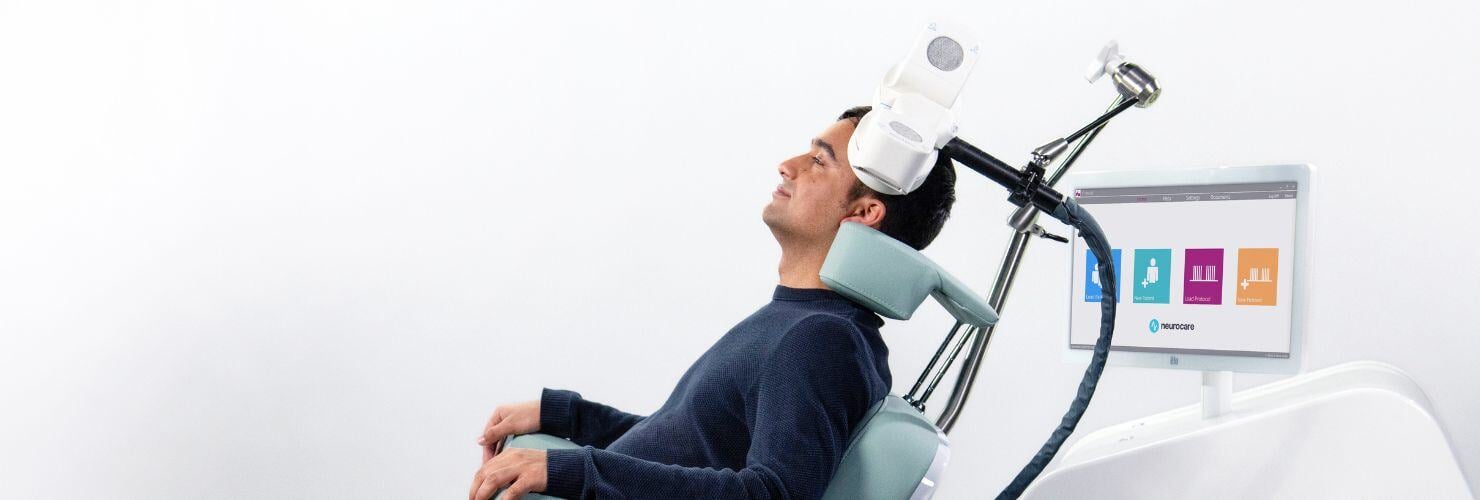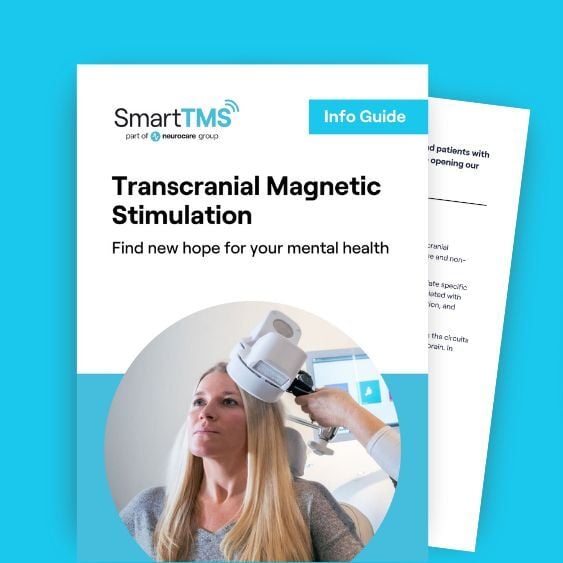Treating cocaine addiction with TMS - the evidence
Can cocaine addiction be treated with transcranial magnetic stimulation? A number of studies have shown that TMS is effective in reducing cravings.

How does an addiction affect the brain?
Addictive substances, such as cocaine, alcohol and nicotine, increase levels of the natural chemical messenger, Dopamine. This occurs in brain circuits controlling pleasure and movement. Normally, the brain releases Dopamine in these circuits in response to potential rewards, like the smell of good food. It then recycles the Dopamine back into the cell that released it, shutting off the signal between nerve cells. Addictive substances prevent Dopamine from recycling, causing excessive amounts to build up between nerve cells. This flood of Dopamine ultimately disrupts normal brain communication and causes the intense pleasurable effects. Repeated use of addictive substances can cause long-term changes in the brain’s reward circuit and other brain systems, which may lead to addiction. The reward circuit eventually adapts to the excess Dopamine brought on by the drug. As a result, people take stronger and more frequent doses to achieve the same high and to obtain relief from the withdrawal symptoms.
What treatment is available for cocaine addiction?
There has been no FDA or NICE approved treatment for Cocaine addiction to date. A number of different types of medication have been used to try and treat Cocaine dependence. These include: Risperidone (antipsychotic medication), Topiramate (an anticonvulsant), Disulfiram (used to treat alcoholism) and Modanifil (a stimulant used to treat narcolepsy). However, none of these medications has yet been established as an effective treatment and they have their own side effects. Psychological approaches to Cocaine Dependency include Cognitive Behavioural therapy (CBT) and Contingency Management (providing rewards to patients who remain substance free). Combinations of this type of treatment have been shown to be the most effective treatment for Cocaine dependence. However, these interventions are prolonged and time consuming and may need to continue for 6 months or more to be effective.
How does Transcranial Magnetic Stimulation work for addiction?
TMS stimulates the brain and changes excitability in the cortex through magnetic fields over the scalp. The passage of the electric current in the coil induces a transient, high-intensity magnetic pulse that penetrates the scalp and painlessly reaches the neurons of the targeted cortical area. High frequency TMS produces increased cortical excitability, increases neuroplasticity (connections between nerves) and causes dopamine neurotransmitters to be released. Over time this effect penetrates more deeply into the brain influencing the areas associated with the craving and addictive behaviour.
What is the scientific evidence for the efficacy of TMS in cocaine addiction?
A recent review (Torres-Castaño et al. 2021. Transcranial Magnetic Stimulation for the Treatment of Cocaine Addiction: A Systematic Review. J Clin Med 28;10(23):5595) examined 12 studies of TMS treatment for cocaine addiction and reported that significant results of the efficacy of TMS have been observed in terms of the reduction of craving to consume and the number of doses consumed. No serious adverse effects have been observed.
What are the treatment results at Smart TMS?
At Smart TMS, we have a case series of 22 patients with a cocaine addiction treated with TMS over the DLPFC for 2 weeks. A self-report craving score was utilised to measure any change (0-10) where a score of 10 is extremely severe craving. We found that 83% (19/22) of cocaine addiction patients saw at least a third reduction in their cravings. Furthermore, a third of cocaine addiction patients were completely free of their cocaine addiction cravings after the TMS treatment. Additionally, a third of the patients who had a positive urine sample at the start of the treatment, had a negative urine sample at the end of the treatment.
Conclusions and recommendations:
There is no definitive treatment for Cocaine addiction. We favour the use of TMS over psychotropic medication to treat the craving in Cocaine dependence. We believe there is adequate evidence that TMS is safe in Cocaine addiction both from the published studies and from our own clinical experience. We have found that after 2 weeks of TMS treatment, craving for Cocaine can be completely abolished. This is a very important development in Cocaine dependence treatment because it removes the most powerful cause of relapse. We recommend that after the TMS treatment is completed a course of CBT/Contingency Management is commenced or at the least attendance at Narcotics anonymous.
Psychological treatment/support is likely to helpful in the longer-term maintenance of abstinence from Cocaine. In addition, based on our experience with maintenance treatment for depression and the Madeo (2020) study we now also recommend maintenance treatment with 2 TMS sessions per month (on the same day) for 12 months.

Dr Leigh A Neal MB BCh FRCPsych MRCGP MD
Consultant in Psychiatry and Neuromodulation
Medical Director: Smart TMS










